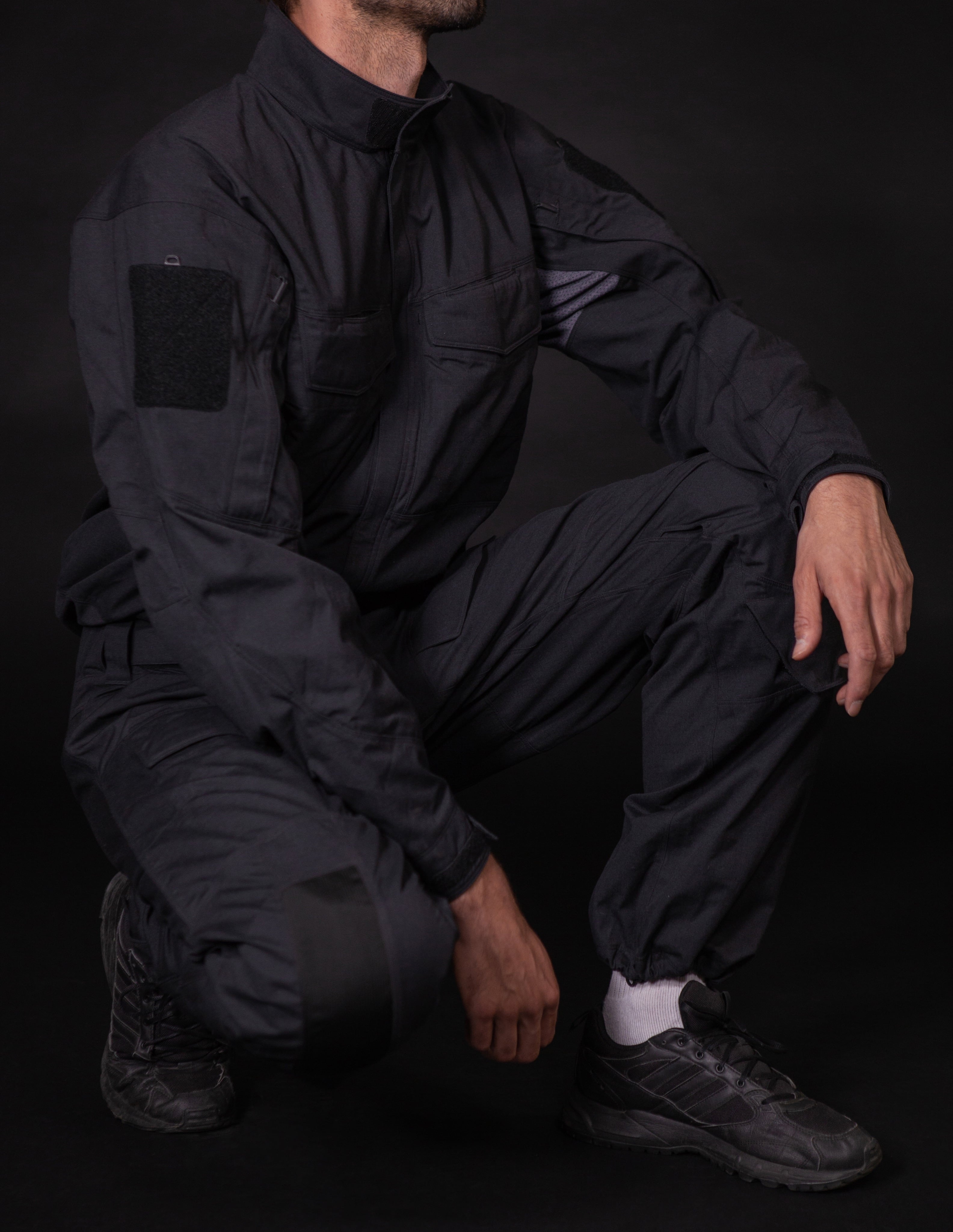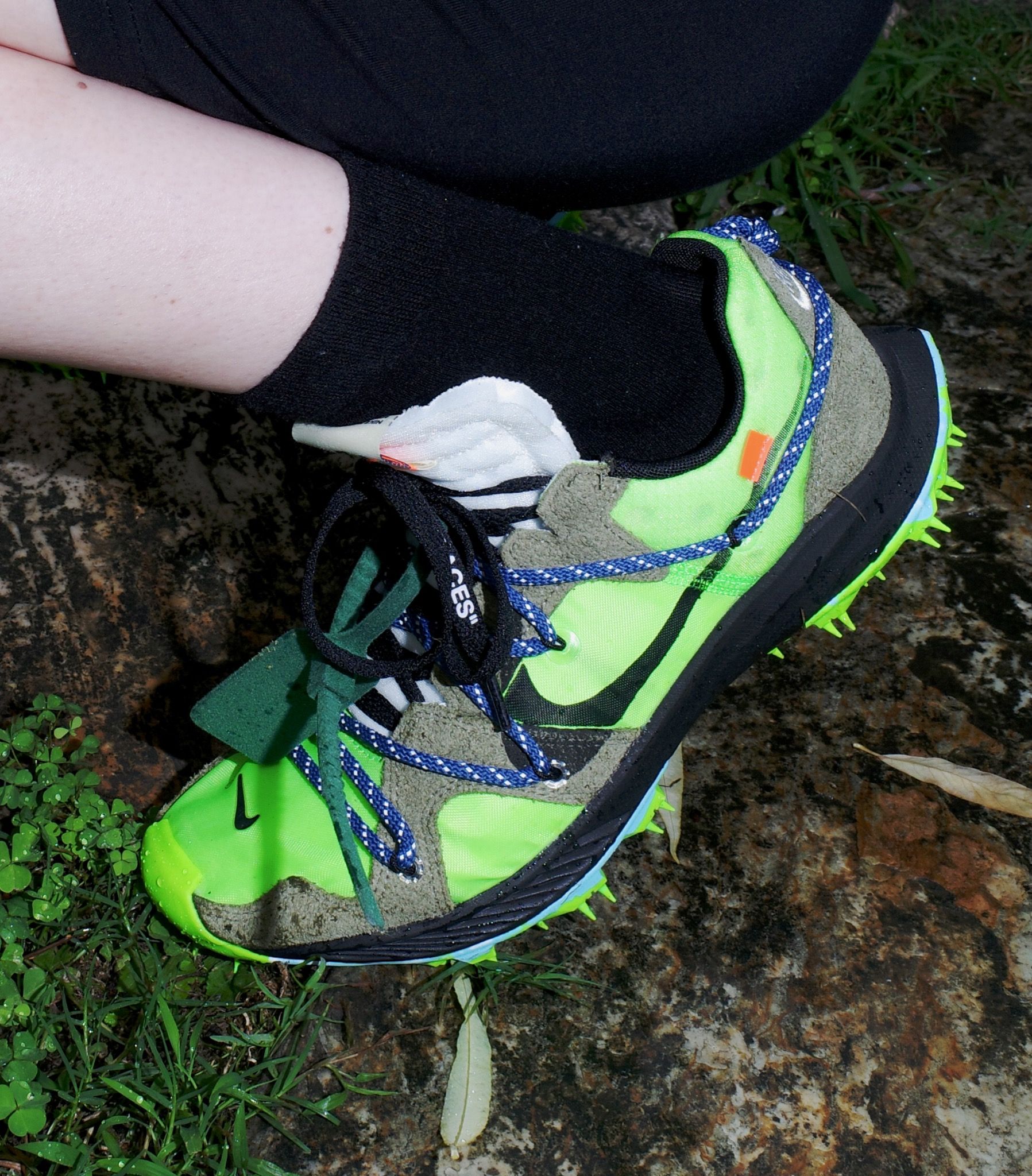Extremist Footwear: Examining the Spectrum of 2017’s Minimal and Maximal Running Shoes
|NIK KOSMAS
Running footwear has experienced a cambrian explosion in the past 10 years, forming a widening spectrum that ranges from “minimal” to “maximal.” On one side, there are the “natural,” barefoot, toe-shoe, running sandal evangelists. On the other, supporters of tech-loaded, highly-cushioned tools made in service of marathoners.
Each camp has its own ideologies, which extend far beyond the design of footwear. Minimalist shoes exist as part of a larger “paleo” ethic, which believes that the human body is healthiest when returned to its stone age habits. This ethic regards gluten, chairs, and even shoes themselves as the causes of civilization diseases that do harm to the body. These ‘back to nature’ movements claim that the body is smart enough to need next to nothing “artificial” – from food to padded shoes – to function well. On the other side, maximalist shoes are tethered to a cybernetic ethic, which espouses nootropics, vitamin supplements, and other body hacks. Around five or so years ago, the first of the super-thick shoes became popular. Many of these shoes share similar design ideas with the minimalist shoes, like zero-drop (which means the heel of the shoe is not higher than the toe) or wide toe boxes, but with the idea that concrete is a hard surface for the human body and that many people can be spared repetitive stress injuries common to runners if they protect themselves from hard jarring impacts.
Here, we review three shoes that run across this spectrum. The GoST Barefoot Sygento is the minimalist entry; the Mizuno Wave Prophecy 6 sits somewhere around the middle, as a classically styled distance running shoe; and the Hoka One One Clifton 4 is far to the side of an ultra-soft street running shoe. Their common denominator is their extremist approach to design, which has made running shoes in general a major influence on new aesthetics in high-fashion footwear.
In terms of performance and health, there are lessons be learned from both sides. There is no single design that can solve each use case, and what works for one person, might not work for another.
GoST Barefoot Sygento
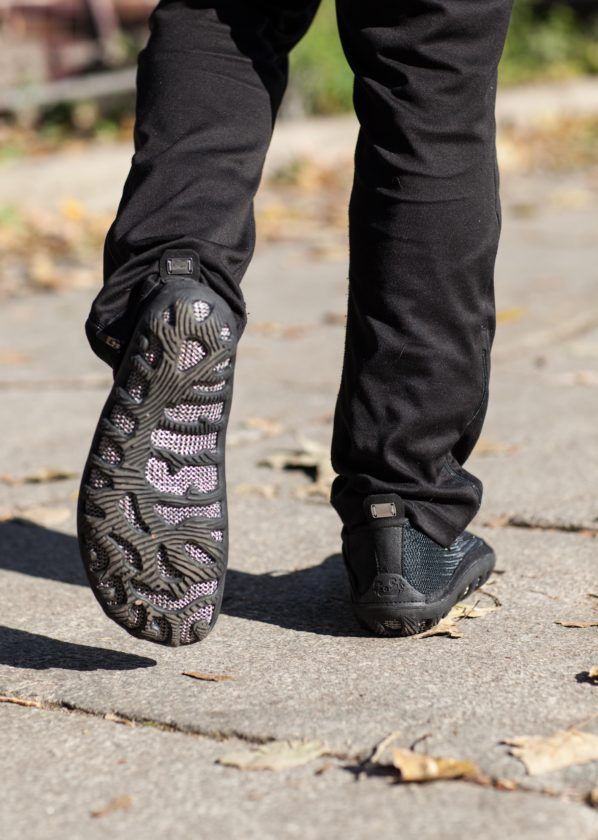
This shoe is pure urban-ninja, it’s black, lean, and a product of German engineering. It sports a very low profile, a wide toe box, zero drop, and a relatively thin and responsive sole — all the hallmarks of a well-made minimal shoe. There has been a lot of consideration put into the design of the upper, with a rather unique tongue and ankle design. The sole is a mixture of plastic and steel chainmail (yes, you read that correctly). GoST got started making pure chainmail barefoot shoes and have branched into more conventional footwear, but they do not seem to want to leave the chainmail heritage behind. The Sygento is marketed as an urban and light sport shoe, and for this application, there are some problems. The chainmail on the sole leads directly to the foot — i.e. If you step on dog shit, it’s going on your socks. This is a mistake. Secondly, the chainmail is heavy compared to similar minimal shoes. Thirdly, the tactile contrast between the chainmail and the plastic is very noticeable and not necessarily pleasant.
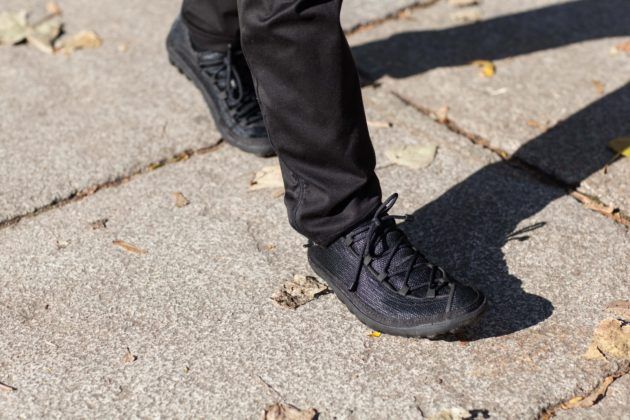
Overall this shoe is very well made, but I sincerely wish it had a completely different sole. Lighter, more flexible, and shit-proof. But of the three shoes reviewed here, this one is the one that I believe in the most. The upper design is really clever, and the all-black look is 100% my style. I hope we can expect a new model of Sygento without chainmail soon.
Mizuno Wave Prophecy 6
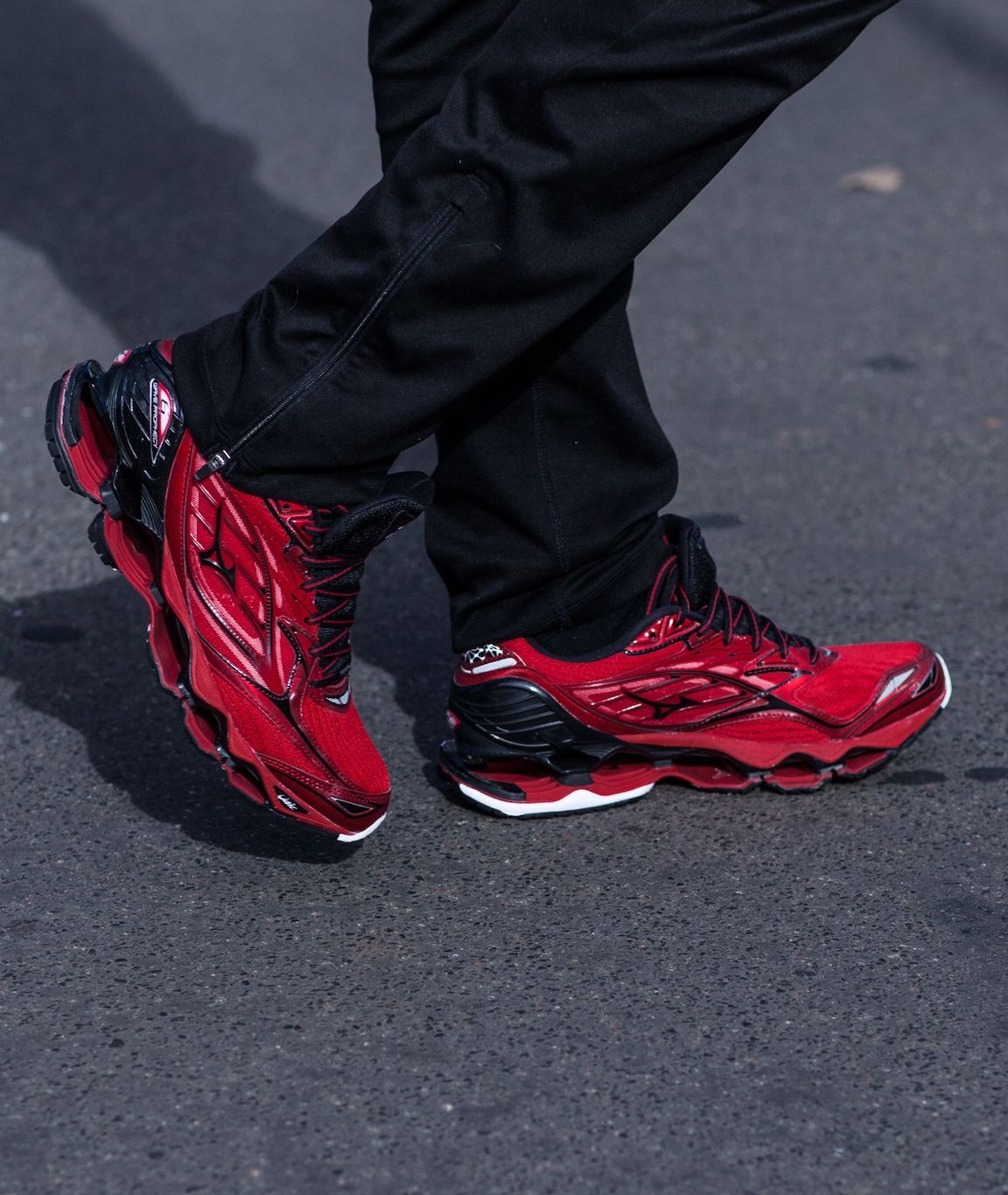
This is an aggressive take on classic running shoe with an insane sole design. With a narrow toe-box, upturned toe, and elevated heel, it is orthopedically not in vogue. But after jogging even a few steps in it, it is very easy to notice how fluid and smooth it feels to move in. It’s almost as if the shoe is running for you, and it’s definitely thinking for your foot. Personally my wide feet do not fit well in a shoe like this, and I like to think more when I’m moving, but for a lot of people this could be a great shoe to keep them safe and doing what they love. The sole design seems somehow fragile, as if you could suffer a horrible accident by blowing out one of the waves.
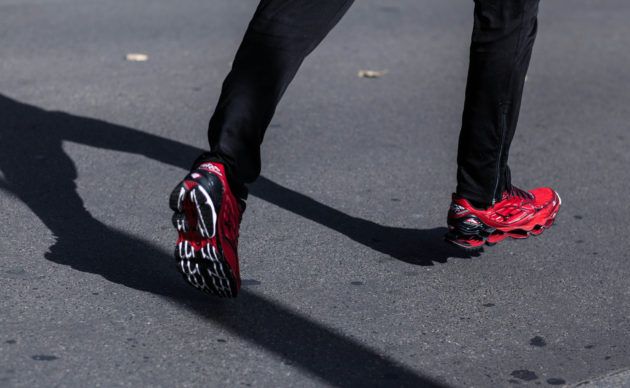
Overall this shoe looks sick, has a great name, and is well designed for a particular style of running. It is probably the one most likely to score you points with the athleticwear fetish crowd, as it really looks like something designed by, and made for, a humanoid jogging machine. The shoe is engineered to help you, programmed to guide you, and is the product for someone who believes in better living through technology.
Hoka One One Clifton 4
This is a classic maximalist running shoe. Its super-thick cushioning is designed to protect the wearer against the repetitive stress of jarring impacts while running on concrete. The upper is knit, and has well-done laminated details. The glue work is clean. The brand has some sexier looking models, which are now getting popular on the fashion scene as a kind of alt-sporty platform sneaker. The shoe features Hoka’s “early stage Meta-Rocker” design, which basically means the sole is designed to create a fulcrum to help the foot roll forward over a certain point, just around the ball of the foot, resulting in an efficient and smooth stride.
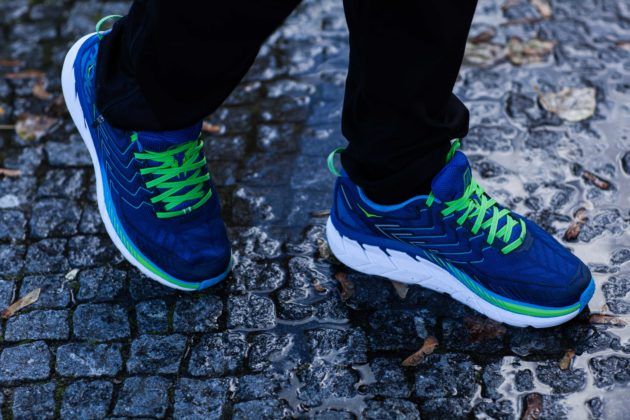
Like many things in life, there’s no black and white answers to most questions. Is it a good idea to engineer a shoe that moves for me? Is it a good idea to make a super thick sole that actually reduces the sensations of my feet in order to protect them and make it feel more “comfortable”?
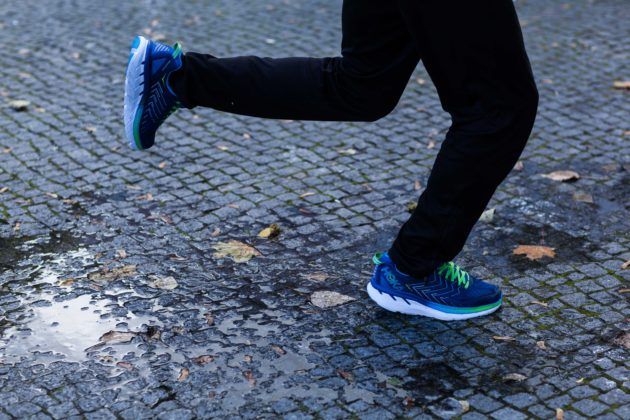
The Hoka delivers well on what it proposes to do: to create a super-cushioned street running shoe with sole architecture designed to help guide me through my stride. Its friendly colors and silly name fit the belief-system of a brand that wants us all to smoothly jog on a cloud, safe from harm or painful sensations.
Credits
- Text: NIK KOSMAS
- Photography: IGA DROBISZ
